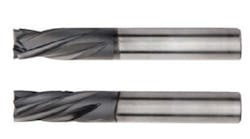Economic activity in the manufacturing sector failed to grow in October for the third consecutive month, and the overall economy concluded 83 consecutive months of growth, say the nation's supply executives in the latest Manufacturing Institute for Supply Management (www.ism.ws) Report On Business.
The report was issued by Norbert J. Ore, C.P.M., chair of the Institute for Supply Management Manufacturing Business Survey Committee. "The PMI indicates a significantly faster rate of decline in manufacturing when comparing October to September. It appears that manufacturing is experiencing significant demand destruction as a result of recent events, with members indicating challenges associated with the financial crisis, interruptions from the Gulf hurricane, and the lagging impact from higher oil prices. This is the lowest level for the PMI since September 1982 when it registered 38.8 percent. In this report, we see inflationary pressures dissolving as the Prices Index fell to 37 percent, the lowest since December 2001 when it registered 33.2 percent. Export orders also contracted for the first time following 70 months of growth."
Manufacturing contracted in October as the PMI registered 38.9 percent, 4.6 percentage points lower than the 43.5 percent reported in September. This is the lowest reading since September 1982 when the PMI registered 38.8 percent. A reading above 50 percent indicates that the manufacturing economy is generally expanding; below 50 percent indicates that it is generally contracting. A PMI in excess of 41.1 percent, over a period of time, generally indicates an expansion of the overall economy. Therefore, the PMI indicates contraction in both the overall economy and the manufacturing sector. Ore stated, "The past relationship between the PMI and the overall economy indicates that the average PMI for January through October (47.8 percent) corresponds to a 2.1 percent increase in real gross domestic product (GDP). In addition, if the PMI for October (38.9 percent) is annualized, it corresponds to a 0.7 percent decrease in real GDP annually."
ISM's New Orders Index registered 32.2 percent in October, 6.6 percentage points lower than the 38.8 percent registered in September. This is the lowest reading for this index since June 1980 when the index was at 24.2 percent. A New Orders Index above 51.6 percent, over time, is generally consistent with an increase in the Census Bureau's series on manufacturing orders (in constant 2000 dollars).
ISM's Production Index decreased to 34.1 percent in October, a decrease of 6.7 percentage points from the 40.8 percent reported in September. An index above 49.9 percent, over time, is generally consistent with an increase in the Federal Reserve Board's Industrial Production figures. Of the industries reporting in October, two registered growth: Apparel, Leather & Allied Products; and Computer & Electronic Products. The industries failing to grow in October are: Nonmetallic Mineral Products; Petroleum & Coal Products; Textile Mills; Furniture & Related Products; Plastics & Rubber Products; Wood Products; Fabricated Metal Products; Printing & Related Support Activities; Machinery; Electrical Equipment, Appliances & Components; Miscellaneous Manufacturing; Paper Products; Transportation Equipment; Primary Metals; Chemical Products; and Food, Beverage & Tobacco Products.
ISM's Employment Index registered 34.6 percent in October, which is a decrease of 7.2 percentage points when compared to the 41.8 percent reported in September. This is the lowest reading for the Employment Index since March 1991 when the index registered 33.6 percent. An Employment Index above 49.5 percent, over time, is generally consistent with an increase in the Bureau of Labor Statistics (BLS) data on manufacturing employment.
The delivery performance of suppliers to manufacturing organizations moved from slower to faster in October as the Supplier Deliveries Index registered 49.2 percent, which is 3.3 percentage points lower than the 52.5 percent registered in September. A reading above 50 percent indicates slower deliveries.
Manufacturers' inventories contracted in October as the Inventories Index registered 44.3 percent, which is 0.9 percentage point higher than the 43.4 percent reported in September. An Inventories Index greater than 42.4 percent, over time, is generally consistent with expansion in the Bureau of Economic Analysis' (BEA) figures on overall manufacturing inventories (in chained 2000 dollars).
The ISM Customers' Inventories Index registered 55 percent in October, an increase of 1.5 percentage points when compared to September's reading of 53.5 percent. The index indicates that respondents believe their customers' inventories are too high at this time.
The ISM Prices Index registered 37 percent in October compared to 53.5 percent in September, indicating manufacturers are paying lower prices on average when compared to September. This is the lowest reading for the index since December 2001 when it registered 33.2 percent. While 14 percent of respondents reported paying higher prices and 40 percent reported paying lower prices, 46 percent of supply executives reported paying the same prices as the preceding month. A Prices Index above 47.4 percent, over time, is generally consistent with an increase in the Bureau of Labor Statistics (BLS) Index of Manufacturers Prices.
ISM's Backlog of Orders Index registered 29.5 percent in October, 5.5 percentage points lower than the 35 percent reported in September. Of the 87 percent of respondents who reported their backlog of orders, 9 percent reported greater backlogs, 50 percent reported smaller backlogs, and 41 percent reported no change from September.
ISM's New Export Orders Index registered 41 percent in October, a decrease of 11 percentage points when compared to September's index of 52 percent. This month's reading of 41 percent ends 70 consecutive months of growth in the New Export Orders Index.
Imports of materials by manufacturers contracted during October as the Imports Index registered 41 percent, 3 percentage points lower than the 44 percent reported in September. This is the ninth consecutive month of contraction in imports.
Latest from Uncategorized
Latest from Uncategorized
Uncategorized
Newsletter Confirmation Page
Oct. 29, 2012
Uncategorized
Gearmaking with Precision, and Speed
July 26, 2012
Uncategorized
Composites, With No Limits
July 25, 2012



